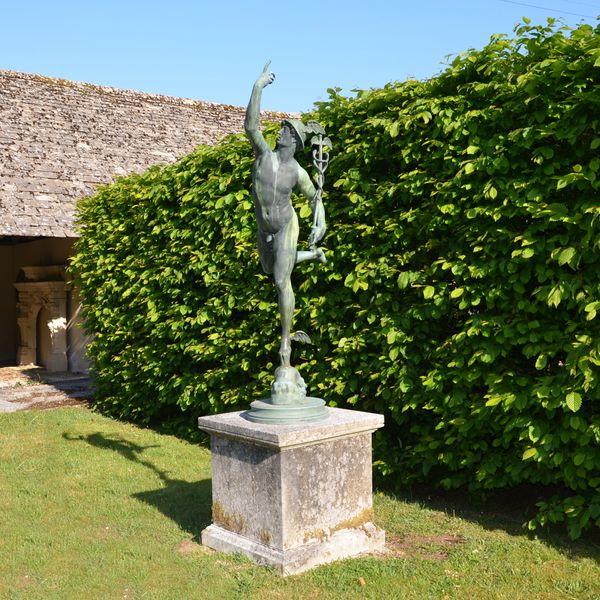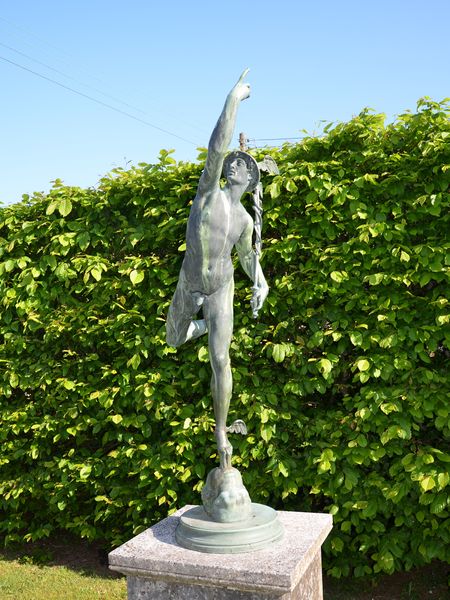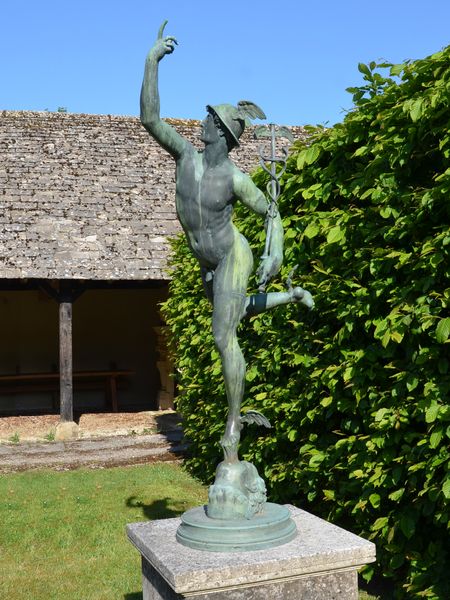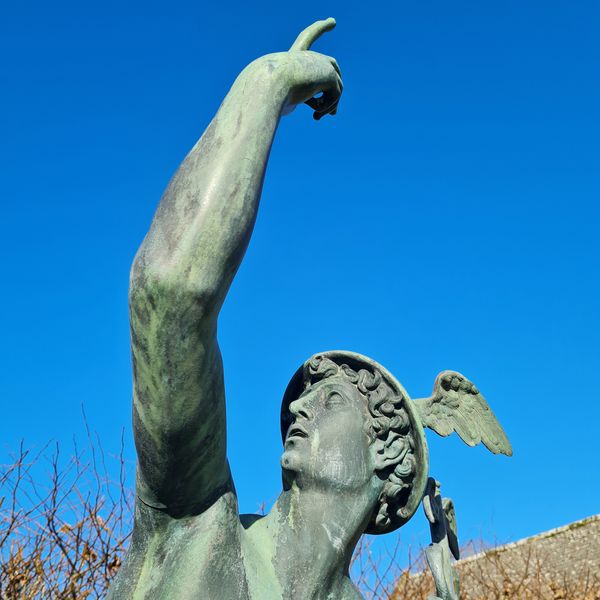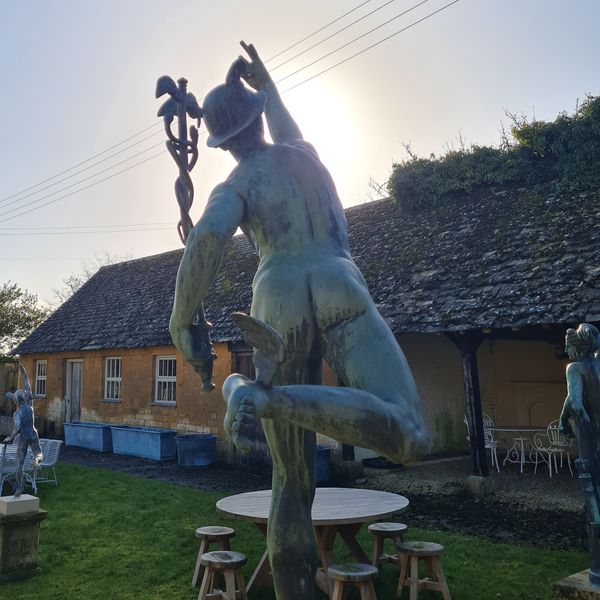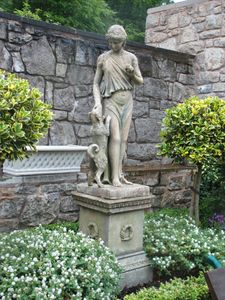Mercury in Flight after the model by Giambologna (1529–1608)
Mercury in Flight after the model by Giambologna (1529–1608)
Circa 1930
Stock Number: 15423/GSO
Height
193.00cm
[75.98 inches]
Sold
Giambologna became well known throughout Europe with every collector wanting an example of his exceptional work, and for generations to come Giambologna remained a ‘classic of sculpture’ with casts continuing to be made from his models on a scale exceeding that of any sculptor before or after him.
This large scale bronze shows Mercury in flight moving in extreme contrapposto. Each ankle is winged (one is missing but will be replaced) on the outside and on his head a winged Petasos (Hat). With the impressive upward gesture of the index finger of his right hand he alludes to the higher power by whom he is sent, being the divine messenger carrying out Jupiter’s behests. Carrying a Caduceus (now missing) on the wind blown from the god of the (Gentle) west wind: Zephyr.
By choosing the motif of a figure in flight, which had previously been reserved to two-dimensional media, Giambologna broke away from the static laws that had governed sculpture and opened up entirely new prospects. His flying Mercury, first cast in around 1565, was effective from every angle of vision and ranked as a Mannerist figure ‘par excellence’, with this model influencing the development of sculpture into the Baroque and beyond.
Diameter at base 47 cm
Weathered carved stone base available separately @ £2,000
Stock no. 12731/GSO
This large scale bronze shows Mercury in flight moving in extreme contrapposto. Each ankle is winged (one is missing but will be replaced) on the outside and on his head a winged Petasos (Hat). With the impressive upward gesture of the index finger of his right hand he alludes to the higher power by whom he is sent, being the divine messenger carrying out Jupiter’s behests. Carrying a Caduceus (now missing) on the wind blown from the god of the (Gentle) west wind: Zephyr.
By choosing the motif of a figure in flight, which had previously been reserved to two-dimensional media, Giambologna broke away from the static laws that had governed sculpture and opened up entirely new prospects. His flying Mercury, first cast in around 1565, was effective from every angle of vision and ranked as a Mannerist figure ‘par excellence’, with this model influencing the development of sculpture into the Baroque and beyond.
Diameter at base 47 cm
Weathered carved stone base available separately @ £2,000
Stock no. 12731/GSO




